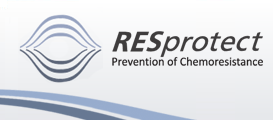|

Volume 581, Issue 19,
31 July 2007,
Pages 3665-3674
Cellular Stress
Copyright © 2007 Federation of European Biochemical Societies Published by Elsevier B.V.
André-Patrick Arrigoa,, Stéphanie Simona, b, Benjamin Giberta, Carole Kretz-Remya, Mathieu Nivona, Anna Czekallaa, Dominique Guilleta, Maryline Moulina, Chantal Diaz-Latouda and Patrick Vicartb
aLaboratoire Stress, Chaperons et Mort
Cellulaire, CNRS, UMR5534, Centre de Génétique Moléculaire et
Cellulaire, Université Lyon 1, Bat. Gregor Mendel, 16 Rue Dubois,
F-69622, Villeurbanne Cedex, France
bEA 300 Stress et Pathologies du Cytosquelette, UFR de Biochimie, Université Paris 7, Paris, France
Received 16 February 2007;
revised 11 April 2007;
accepted 15 April 2007.
Available online 24 April 2007.
Abstract
Hsp27 and αB-crystallin are molecular
chaperones that are constitutively expressed in several mammalian
cells, particularly in pathological conditions. These proteins share
functions as diverse as protection against toxicity mediated by
aberrantly folded proteins or oxidative-inflammation conditions. In
addition, these proteins share anti-apoptotic properties and are
tumorigenic when expressed in cancer cells. This review summarizes the
current knowledge about Hsp27 and αB-crystallin and the implications,
either positive or deleterious, of these proteins in pathologies such
as neurodegenerative diseases, myopathies, asthma, cataracts and
cancers. Approaches towards therapeutic strategies aimed at modulating
the expression and/or the activities of Hsp27 and αB-crystallin are
presented.
|






